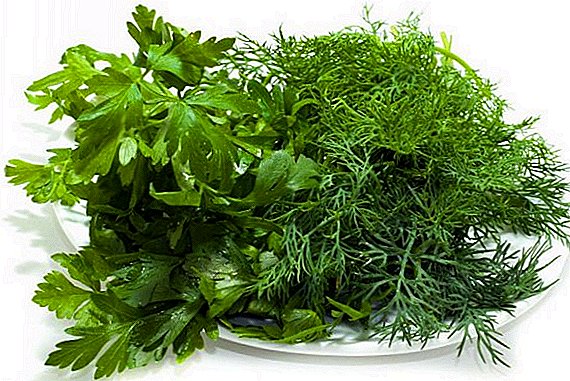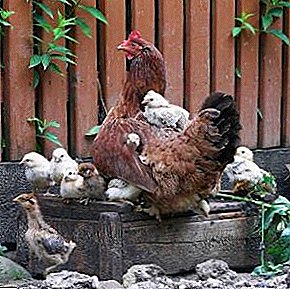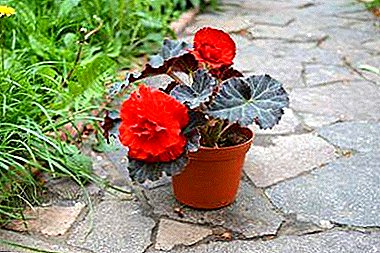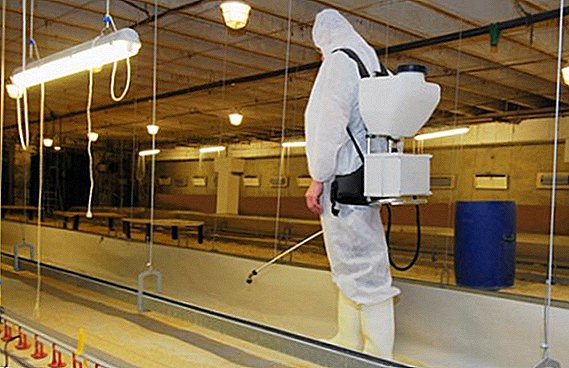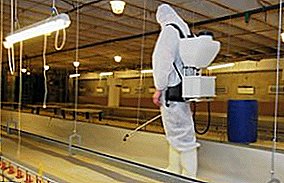 Infection in poultry can result in the death of all bird stock. The best prevention of such a sad outcome is the periodic disinfection of the chicken coop. In addition, such a procedure will be required in the course of the fight against an already occurring disease. Consider the types of disinfection, as well as methods of its implementation.
Infection in poultry can result in the death of all bird stock. The best prevention of such a sad outcome is the periodic disinfection of the chicken coop. In addition, such a procedure will be required in the course of the fight against an already occurring disease. Consider the types of disinfection, as well as methods of its implementation.
What is disinfection
To begin, we define the concept. Disinfection is a set of measures that can destroy (or reduce the concentration to a safe level) pathogens of infections, parasites and toxins. The latter refers to various types of poisons of biological origin.
Did you know? Disinfection of surgical instruments by calcining them on fire was obligatory for the Roman physicians. It was believed that in this way the arrows of Apollo are destroyed, because this god, among other things, was responsible for punishing people by sending diseases to them.Video: chicken coop disinfection
Types of disinfection
There are several types of disinfection: wet, using aerosols and carried out in the presence of birds in the hen house. Consider these types in more detail.
Wet
This method consists in spraying disinfectant liquid on the inner surfaces of the chicken coop (without birds) using a sprayer or some similar apparatus. The bird is started up in the chicken coop after the spray has dried.
Aerosol
This method is similar to the previous one, only the disinfectant is not sprayed, but sprayed as an aerosol suspension. For this, spray cans or spray guns can be used. In addition, an aerosol cloud may form as a result of a chemical reaction. There are no other differences from wet disinfection. 
In the presence of birds
This method is also called sanitation. For her use the most safe substances for birds. In addition, they are usually used in low concentrations in order not to harm the inhabitants of the coop. In contrast to the treatment of empty rooms, the efficiency of rehabilitation is not too high. Disinfection itself can be both wet and aerosol.
We advise you to read about how to build a chicken coop for the winter, what kind of lighting should be in the chicken coop in winter, how to make ventilation in it, and also how best to heat the chicken coop in winter.
What and how is carried out
Various substances are used as disinfectants. It can be as special multi-component preparations of industrial production, and disinfectants prepared independently.
Important! Work on the disinfection of the coop is recommended with the use of safety measures: you must use a respirator and rubber gloves.
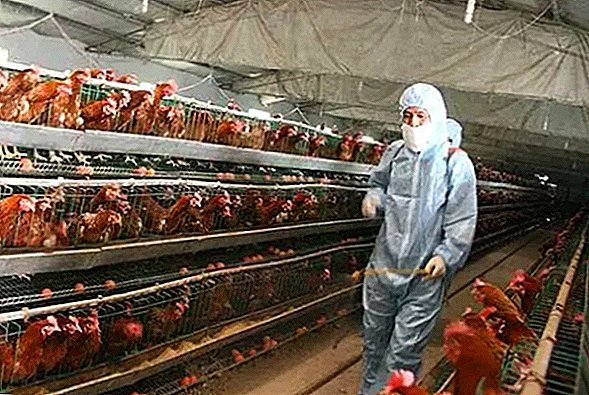
Aerosols
An effective tool of this type is a mixture of bleach and turpentine. For the manufacture of the mixture is taken 1 part turpentine to 4 parts bleach. 0.5 ml of turpentine and 2 g of bleach is consumed to process one cubic meter of the room of the chicken coop.
We recommend reading about how to build and equip a chicken coop, as well as make a roost, a cage, an aviary, a nest, a feeding trough and a drinker for chickens.
When mixing both substances, an exothermic reaction begins and a cloud forms, disinfecting the room. The mixture can be prepared not in one container, but in two or more - in this way, a more uniform distribution of the aerosol is achieved.
This process takes about 30 minutes. It can be carried out on condition of the subsequent airing of the room. The procedure is carried out once a day for 3-4 days a month. Processing can be carried out in the presence of a bird.  Smoke bombs can be attributed to aerosol preparations. In particular, sulfur checkers "Climate" and "Fas" are popular. However, using these drugs, you should remember about their features. They can be used only in empty chicken houses, and the room will have to be ventilated for at least a week, the smoke itself is poisonous and has an unpleasant smell.
Smoke bombs can be attributed to aerosol preparations. In particular, sulfur checkers "Climate" and "Fas" are popular. However, using these drugs, you should remember about their features. They can be used only in empty chicken houses, and the room will have to be ventilated for at least a week, the smoke itself is poisonous and has an unpleasant smell.
Learn how to get fleas out of the coop.
To create an effective concentration of smoke will have to close up all the cracks in the room. The drug acts on the fungus, mold, insects, but not on infectious agents.
Did you know? Sulfur was used for fumigation of premises and patients in ancient times, at least hundreds of years BC. er It was practiced in Egypt, India, Greece, Rome. In addition, various herbs were used to fumigate the premises.
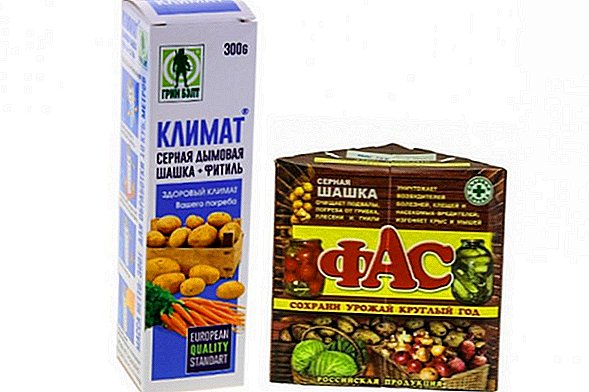
Salt solutions
Sodium hypochlorite (sodium hypochlorous acid), which can be made independently, has good disinfecting properties. To do this, make a solution at the rate of 200 g of bleach and soda ash per liter of water.
It will be interesting to read about how to choose the right chicken coop when buying, as well as how to make a chicken coop out of the greenhouse.
The reaction lasts for 24 hours, the first 5-6 hours the solution must be stirred periodically. The resulting solution effectively destroys pathogenic microorganisms, it can be sprayed or sprayed with a spray. The treatment is carried out weekly in the absence of chickens.
Solutions from viral infections
Against viruses, it is better to use ready-made drugs. This, for example, "Viricide" that destroys viruses, bacteria and fungi. It is a concentrated liquid that must be dissolved in water for use. 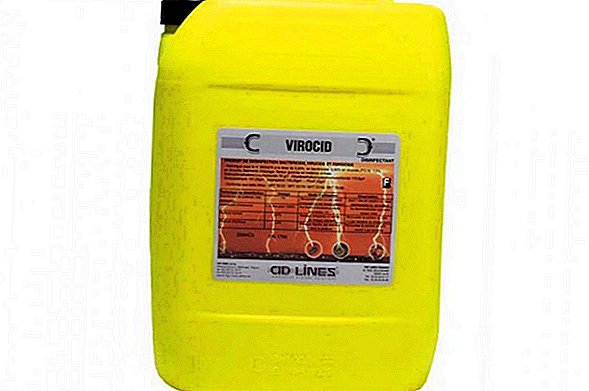 The working solution is made according to the instructions. The drug can be used for both wet and aerosol treatment, allowed its use in the presence of animals. After processing, the development of pathogenic organisms is constrained to six months.
The working solution is made according to the instructions. The drug can be used for both wet and aerosol treatment, allowed its use in the presence of animals. After processing, the development of pathogenic organisms is constrained to six months.
Other means of industrial production have approximately the same effect and method of use: Bianol, Ecocide C, Bromosept, etc. When using them, it is necessary to strictly follow the instructions, this ensures that these products do not damage the health of animals. 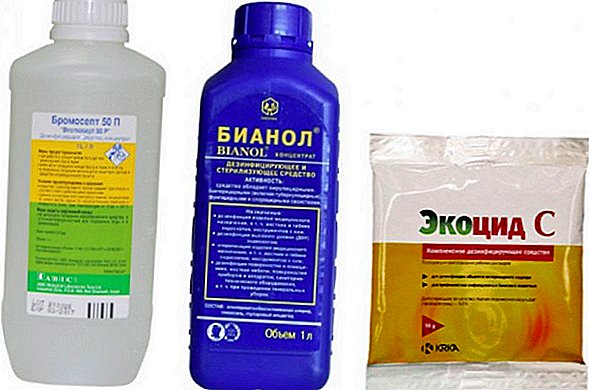
Lime
A solution of a chloric liquid is widely used to treat a chicken coop. The drug is sold in packaged powder. He is bred according to the instructions in the pelvis or in a similar container and left in the hen house for a day.
During this time, chlorine vapor provide a fairly high-quality disinfection. The presence of the bird during the procedure is excluded, so it is better to carry it out before the next settling of poultry. After the procedure, the room must be ventilated.
Iodine
Effective disinfectants include iodine checkers (for example, Dix), which can be used in the absence or in the presence of birds. The disinfection procedure takes from 30 minutes to 3 hours, while pathogenic microorganisms are destroyed, or at least their development is inhibited.
Video: processing a chicken coop with Dixam The processing procedure and the number of procedures depend on the specific situation: prevention in the presence of birds or disinfection in their absence. All options for using the same "Dixam" are described in detail in the instructions for use of the tool.
Read more about why chickens peck at each other and a rooster, what to do if chickens don’t rush and peck eggs, why there is blood in chicken eggs, do you need a rooster to carry eggs when young hens begin to rush.
There is also a drug "Monclavit-1", created on the basis of iodine and has bactericidal, fungicidal and antiviral properties. However, for the rehabilitation of the chicken coop with the help of Monklavit, a cold fog generator will be needed, so this tool is suitable, rather, for large farms. 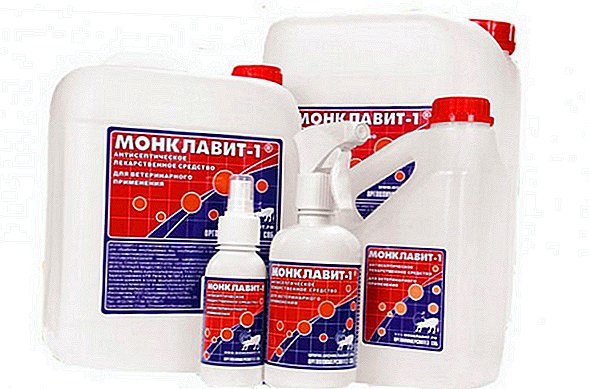
Disinfection at home
When using any disinfectant, it is necessary to perform a series of actions, namely:
- litter, litter, feathers, any litter are removed from the chicken coop;
- floor, walls, ceiling, perches, windows, drinkers, feeders wash;
- the room is treated with a disinfectant and kept at the proper time;
- the chicken coop is re-washed (the use of some drugs does not require re-washing) and is dried;
- the room is ventilated, the new bedding is laid.
Familiarize yourself with the choices and uses of fermentation litter for chickens.
Video: chicken coop disinfection
Important! The presence of bird droppings in the treated room significantly reduces the effectiveness of the means used.
Prevention in the hen house
To reduce the likelihood of poultry disease, you can apply the following preventive measures:
- periodic treatment of the premises with disinfectants;
- airing the room, coupled with good ventilation to prevent excessive humidity;
- the use of quicklime, which you need to cover the floor and cover it with bedding;
- whitewashing the walls.
Summing up, it can be noted that disinfection of the chicken coop is technically no problem, and its benefits are enormous. For this procedure, you can use a wide range of ready-made products or prepare disinfectants yourself. And if for some reason there is no opportunity to do it personally, you can always use the services of specialists. 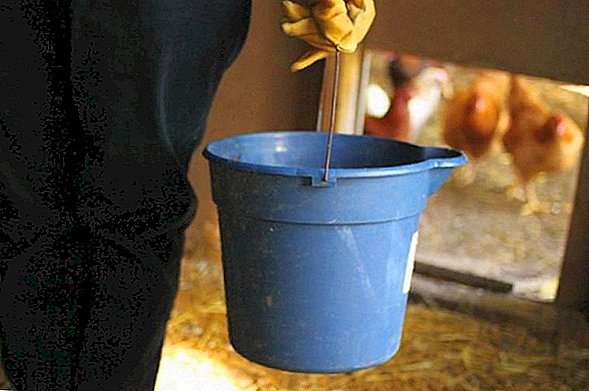
Reviews from the network








